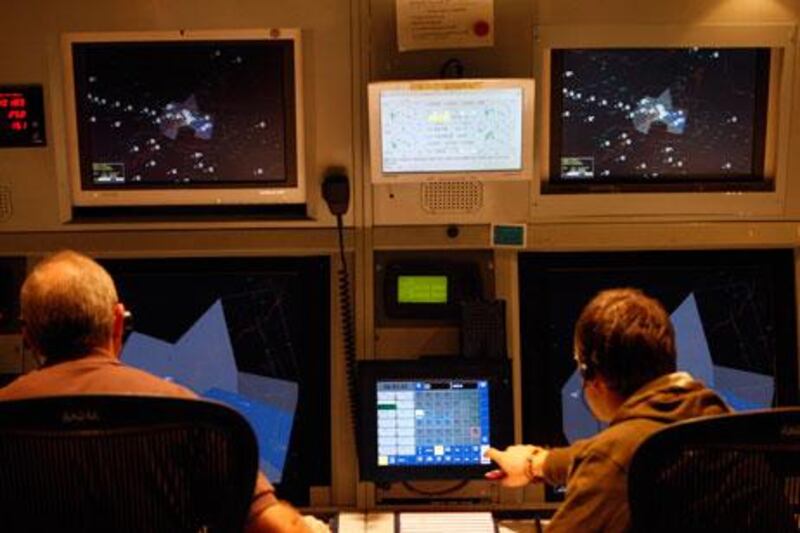DUBAI // A UAE Air Force jet came within seconds of colliding with an Emirates airline flight as it was taking off from Dubai international airport, a preliminary report has shown.
The BAE Hawk was forced to take evasive action to avoid a mid-air crash with the Boeing 777 flight bound for Istanbul.
The incident at 7.37am on February 12 was revealed in a preliminary incident report by the General Civil Aviation Authority (GCAA).
None of the 431 passengers on the Emirates flight were injured in the incident, but the GCAA launched an investigation.
The report comes as the International Air Transport Association (IATA) has warned that more must to be done to alleviate Arabian Gulf nations' congested airspace.
A report by the authority's air accident investigation sector said the Hawk crew were transmitting on a different frequency to Dubai air-traffic controllers.
The reasons for this are under investigation. The UAE Air Force is also investigating.
The Emirates flight had been in the air for about a minute before air-traffic controllers told the crew a fast-moving aircraft was heading its way at an altitude of 150 metres, the report said.
But "at this stage of the B777's initial climb it was not possible to take any avoidance action".
The Hawk jet, which was travelling at a speed of more than 660kph then "performed a rapid avoiding manoeuvre/hard turn to the left".
The two planes missed each other by just 30 metres vertically and 555 metres horizontally, the report said.
"Based on the data, when the Hawk manoeuvres to the left of UAE123 (Emirates Airline jet), the Hawk was less that 3.5 seconds from intercepting the climb profile of UAE123," said the report.
The airliner continued on its scheduled flight and the military jet returned to Al Minhad airbase.
"Emirates can confirm that an incident involving flight EK123 took place on February 12 as mentioned in the UAE General Civil Aviation Authority (GCAA) preliminary report," said an Emirates airline spokesman.
"Emirates is co-operating fully with the GCAA and is awaiting the final report. Safety is of paramount importance to Emirates and this incident is being treated very seriously and with the highest priority."
The UAE Air Force two-seater jet had taken off from Al Minhad airbase at 7am and had been airborne for 37 minutes before the Emirates flight's take-off.
The jet had been seen on Dubai Air Traffic Control's radar on several occasions crossing into airspace in which it should not have been.
The report says there was confusion between the military jet's crew and ground controllers, with air-traffic control not being informed of the military jet's flight plan.
Investigators also found that the Hawk crew, who wanted permission to fly through the area, were initially given the wrong radio frequency to contact the airport's control tower.
"ATC had limited time to pass traffic information in a timely manner as required," said the report.
The IATA is working with governments, airlines and civil aviation bodies in the region to reach an agreement on how to reduce air-traffic congestion.
One of the key problems is that 55 per cent of the Gulf's airspace is reserved for military use, which results in less area available for commercial flights.
Michael Herrero, the head of IATA's Arabian Gulf operations, said there needed to be a concerted, region-wide effort to tackle the problem.
Experts are calling for a review of the layout of the existing airspace in the region as a way of solving the problem.
The GCAA will continue with its investigation into the incident and if no cause has been identified within 12 months, an interim report will be published.
Any safety issues identified during the course of the investigation will be made available to all the parties involved.
A final detailed report will be published once further data collection, analysis and findings have been completed.






